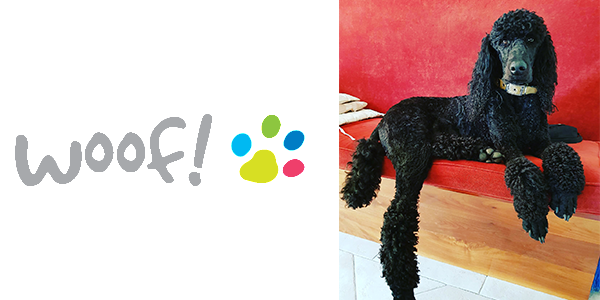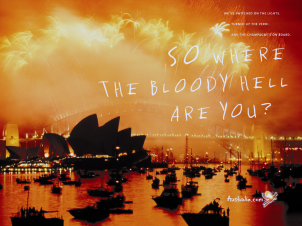“Mr. Murray,” says a nurse coming into the room, “have you decided on a name?”
“We’re thinking Callum,” the man replies, shaking his Dare Iced Coffee bottle.
The nurse’s smile stiffens, the baby’s disappears. We flash forward to a series of vignettes that capture Callum’s humiliation over the years, with the unfortunate pairing of his first and second names resulting in a lifetime of squid-related embarrassment.
Flash back to the father taking a sip of his Dare Iced Coffee: “Let’s make it Jack.”
It’s an advertisement that captures Dare’s disruptive, energetic spirit. True to its brand, Dare puts out light-hearted content that wakes people out of lethargy, as their product is designed to do. But recently, this tone landed them in strife, in an ad accused of breaching the Australian Association of National Advertisers Code of Ethics.
Dare promoted their new iced coffee product as containing “sweet FA sugar” in outdoor advertisements around the country. Complaints were made, alleging the content was offensive and in breach of a Code of Ethics that prohibits the use of strong or obscene language.
When approaching campaigns with provocative intentions, advertisers tread a fine line. Dare’s allusion to swearing was deemed acceptable by the panel, as it targeted a mature market (iced coffee drinkers) and contained no aggression or offensive imagery. “It was a play on words in the context of a product that added no sugar,” claimed the advertiser.
There is nuance involved in what is ultimately deemed appropriate. When done well, the content is attention-grabbing and memorable, and brands are rewarded. When done badly, audiences are alienated and brands can be left staring down the barrel of legal action.
WTF – When They Finesse
Successfully slipping a swear word into an ad is pretty dependent on context, as shown by the use of the term WTF (what the f**k). If someone is saying WTF as an expression of incredulity or annoyance, the allusion to the F word is overt, and may be deemed inappropriate. But in a different context, it can inform a successful marketing campaign.
When Nando’s put the letters together to convey cheap chicken and chips on Wednesday, Thursday and Fridays, they pulled it off. They not only grabbed consumer attention (and maybe caused a few chuckles), they also communicated with their customers which days the special applied. Job well done.
And Nando’s aren’t the only ones who have made it work. Pringles’ “What The Flavour” campaign met its brief of “grabbing attention and maintaining engagement”. Jell-O created a social media campaign based around FML, which they re-defined to mean: “Fun My Life”.
The unofficial Northern Territory ad campaign that went viral a few years ago employed a similar tactic, yet with much greater shock value. Alluding to the rough and rugged aesthetic of the Northern Territory and speaking to a sense of Aussie larrikinism, the unofficial tourism campaign donned the slogan: CUintheNT.
The ad was met with inevitable backlash, to which one local replied: “Snowflakes melt in the heat.”
Bloody controversy
Of course, while cheeky slogans have domestic appeal, they don’t always translate to international markets. Tourism Australia’s “where the bloody hell are you?” campaign (released under then Managing Director, Scott Morrison) generated strong publicity around the world, but was also highly controversial.
The strategy was clear. Leverage Australia’s easy-going, friendly nature whilst celebrating its natural beauty. But it was banned in the UK and Canada. Singapore ran a version of the ad that simply read: “So, Where Are You?”
Scotty shrugged it off though, saying that the ad had high appeal among their target audience: “experience seekers”. Tourism Australia built the controversy into the brand, sending the star of the ad, Lara Bingle, to London to “protest” the ban as a publicity stunt.
While towing the line of controversy can be a helpful tactic, if the content is banned entirely, the risks fail to see rewards.
As such, food delivery business Youfoodz should have put a fork in it. Their original ad featured a young boy impersonating foul-mouthed TV chef Gordon Ramsay.
“How long do you think this took me to cook?” he asks. “Two forking minutes…Un-forking believable”.
This was too much for audiences, with complaints against the ad characterising it as “totally inappropriate” – not just because of the words, but because they were said by a child. A modified version followed, in which the word “forkin” was replaced with a beep, but this was similarly rebuked. The Ad Standards Bureau received a further 170 complaints calling the updated commercial a “shocking example for other children” and “offensive”.
Advertisers and marketers have been trying to slip swear words into their work for years. And whether the intention is to shock, appear authentic, get a few laughs, or a combination of the lot, it’s a handy tool.
But when considering getting a bit controversial, its important to ensure the content is appropriate for your target audience, is not too overt and doesn’t involve kids…
Just don’t fork it up.

Doggy from marketing
We’re all bombarded with advertisements. Digital marketing experts estimate that consumers and their dogs are exposed to 600 messages a day. Cutting through the clutter requires a tactical approach, as the article above makes clear.
Indeed, marketers use a load of tactics to ensure their voices are heard. As a dog, it sometimes pays to follow suit.
When I want something from Barbara, I take a leaf out of the marketing guidebook.
Ambient advertising – this sees the placement of advertising materials in unusual and unexpected places. It treats the world as an advertising stage. My interpretation involves placing my lead in common areas in a not so subtle way. If my family are watching TV, in front of the TV will do. Are they in bed? Then on the bedroom floor. Cooking dinner? Kitchen floor. Its about being opportunistic.
Ambush marketing – this involves intruding on public attention surrounding an event. If Barbara is busy on zoom and I would like a walk, for example, I bark and gesture to my lead, deflecting attention away from the conversation and towards me.
Making connections – marketing can be subtle too, and so can I. Sometimes marketing isn’t about immediate gain, its used to develop brands and create connections with consumers. I do this by showing my enthusiasm when my owners exhibit rewardable behaviour. That means cuddles post-walk and post-dinner.
You scratch my back, I’ll paw yours.
Contact us to talk about creating engaging content – or dealing with negative perceptions



